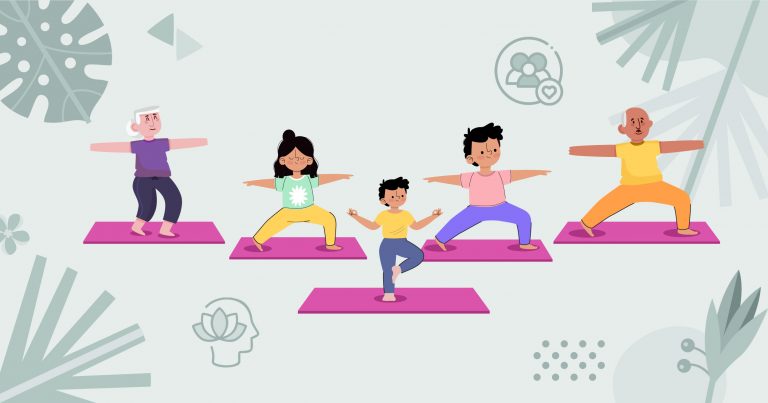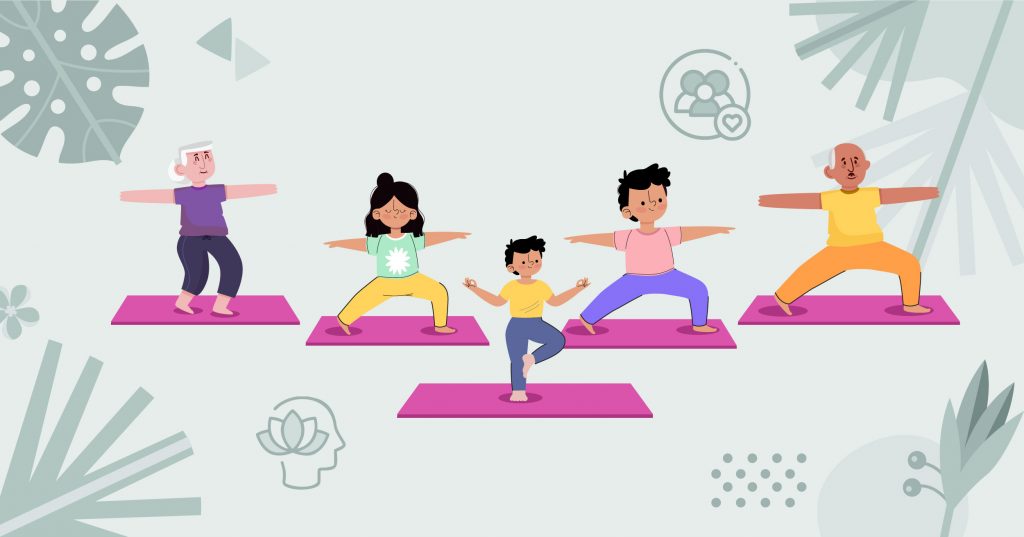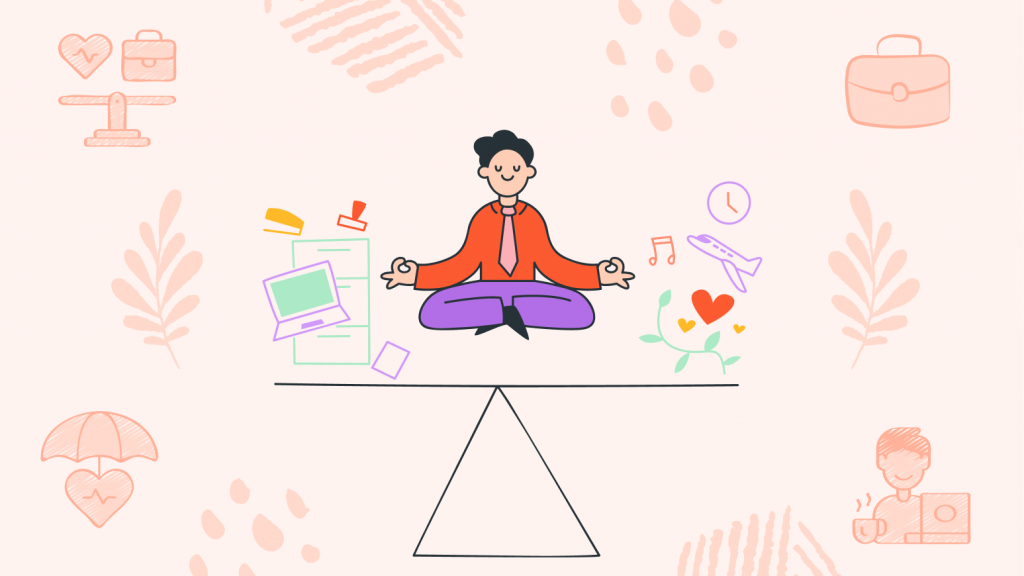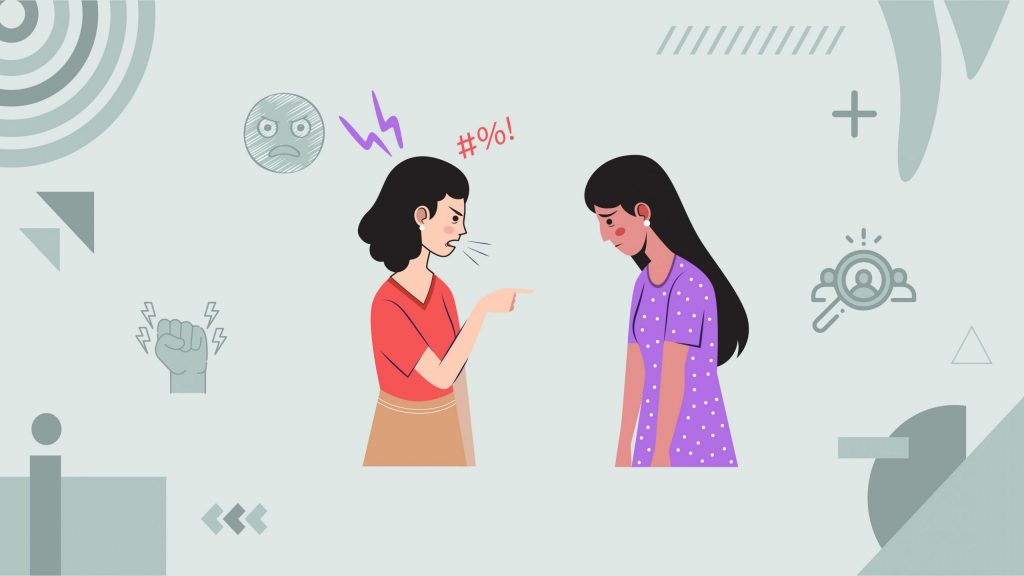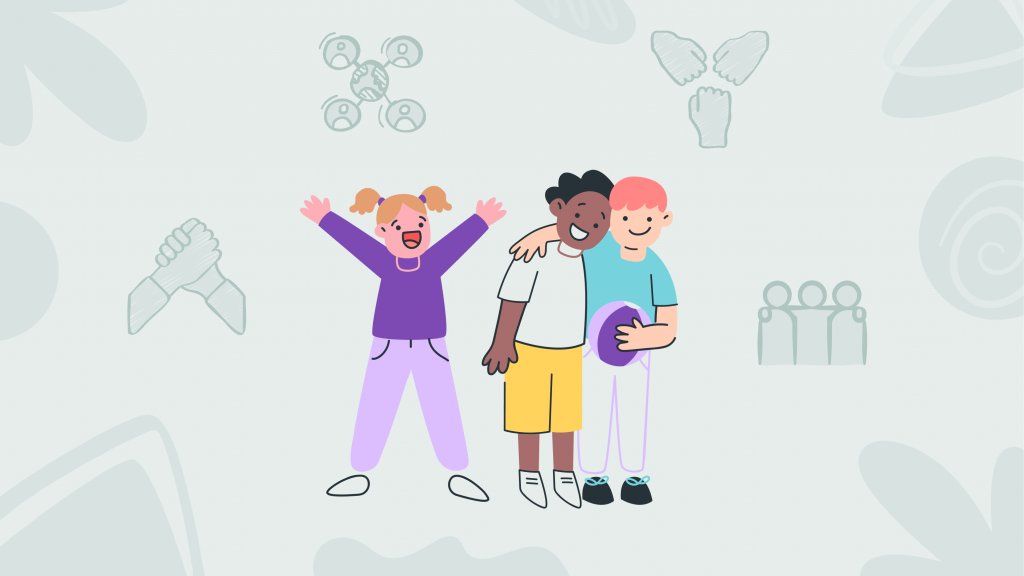The Family Fitness Challenge
In homes around the world, juggling the health needs and interests of different generations can feel like a full-blown family Olympics. Whether it’s the energetic toddlers, busy middle-agers, or wise grandparents, everyone brings their own fitness levels and health advice to the table. It’s like trying to choreograph a dance where everyone has their own unique steps. Merging these diverse routines into a cohesive family fitness plan isn’t just about getting everyone off the couch—it’s a chance to strengthen family ties, deepen understanding, and boost support across all ages.
Imagine a Sunday morning where instead of everyone doing their own thing, the whole family is involved in a backyard obstacle course or a living room yoga session. It’s about transforming fitness from a solitary task to a shared adventure, making it a source of laughter and teamwork. This approach not only keeps everyone physically active but also knits the family closer, creating memories and building habits that span generations.
This unity in diversity does more than keep everyone healthy; it teaches valuable lessons about respect and cooperation. Children learn early that staying active is a fun part of life, adults find motivation in their roles as healthy role models, and seniors feel valued and included, rather than sidelined. Integrating varied health needs into one plan is not without its challenges, but the rewards—stronger bodies and stronger bonds—make it a worthy pursuit.
The Science of Shared Activity
When families come together for physical activity, they’re doing so much more than improving their physical health—they’re also boosting their emotional and psychological well-being in profound ways. Neurologically, engaging in shared physical activities can kick-start the release of endorphins, those famed ‘feel-good hormones’ that naturally elevate everyone’s mood and slice through stress. This chemical cocktail works wonders across all ages, making group exercise a universal mood enhancer.
But the benefits stretch even further. When activities span generations, they encourage what neuroscientists call increased neural plasticity. This is a fancy way of saying our brains get better at adapting and growing, thanks to the social interactions and cognitive challenges that come with learning new exercises or adapting to different fitness levels. Imagine a grandparent and grandchild learning to dance together—both brains are firing on all cylinders, forming new connections as they step to the beat.
Psychologically, exercising together does wonders for strengthening social bonds within the family. Tackling a physical challenge as a unit can foster a deeper sense of trust and empathy among relatives, cementing a foundation for lifelong healthy habits. This communal approach to fitness can be especially pivotal for members who might feel sidelined due to age or ability, such as the very young or elderly. Participating together in these activities ensures everyone feels included and valued, countering feelings of isolation and promoting a healthy, inclusive family environment.
In essence, when families move together, they grow together—both physically and emotionally. This holistic approach not only keeps bodies fit but also weaves stronger relational fabrics, making each workout session an opportunity for personal growth and family bonding.
Subscribe to newsletter
Get your Gut Health Starter Guide right now.
Elevate your Tuesdays with practical, science-backed wisdom propelling you forward on your gut health journey.

Fitness for All Ages
Creating a fitness regimen that caters to every family member’s needs requires creativity and flexibility. Here’s how to make it work:
- Plan Inclusive Activities: Choose activities that can be modified to suit different fitness levels and abilities. Walking, cycling, swimming, and yoga are excellent for all ages. Ensure that each activity includes elements that can be adjusted, such as walking speed, bike trail difficulty, or yoga pose complexity.
- Establish Routine Together Time: Set a regular schedule for family fitness activities, making this time non-negotiable, much like a family dinner. This regularity not only builds anticipation but also establishes a routine that encourages consistent participation.
- Set Common Goals: While individual fitness goals are important, setting team objectives can be incredibly motivating. Whether it’s cumulatively walking a certain number of miles each week or preparing together for a community fun run, shared goals create a sense of camaraderie and collective achievement.
- Celebrate Achievements: Recognize and celebrate milestones for all family members. This could be as simple as acknowledging a personal best, commemorating consistency, or celebrating the completion of a group challenge. Celebrations reinforce the joy of fitness and the benefits of working together.
A Family That Trains Together
Meet the Moreno family, a vibrant group whose ages span from 8 to 80. They faced the typical challenge of finding activities that suited everyone’s fitness levels and interests. However, inspired by a local community health challenge, they embarked on a journey that would transform their lives. They integrated weekly bike rides, Saturday morning yoga sessions, and daily evening walks into their routine, turning exercise into a shared family adventure.
Maria, the family’s matriarch, recalls, “When we started, it was about getting everyone more active. But it quickly became so much more. Our bike rides and yoga sessions were filled with laughter, our walks with deep conversations. We grew closer as a family, and everyone’s health improved.”
The youngest member, Lucas, discovered a passion for cycling, which not only boosted his fitness but also gave him a sense of independence and confidence. Grandpa Joe, on the other hand, found yoga incredibly therapeutic for his arthritis. “Seeing my grandson take up cycling and my father embrace yoga was incredibly fulfilling,” Maria says. “It was about more than just physical health; it was about nurturing our family bond and building a legacy of health and happiness.”
Lucas shares his perspective, “At first, I wasn’t too keen on spending my weekends doing family exercises. But once I got into cycling, I couldn’t wait for our rides. It’s cool seeing Grandpa getting into yoga, too. It’s like we’re all on this journey together.”
Grandpa Joe adds, “I never thought I’d be doing yoga at my age, but it’s been a revelation. It’s helped my arthritis, and I feel more connected to my family than ever. We’re all looking out for each other’s health now.”













